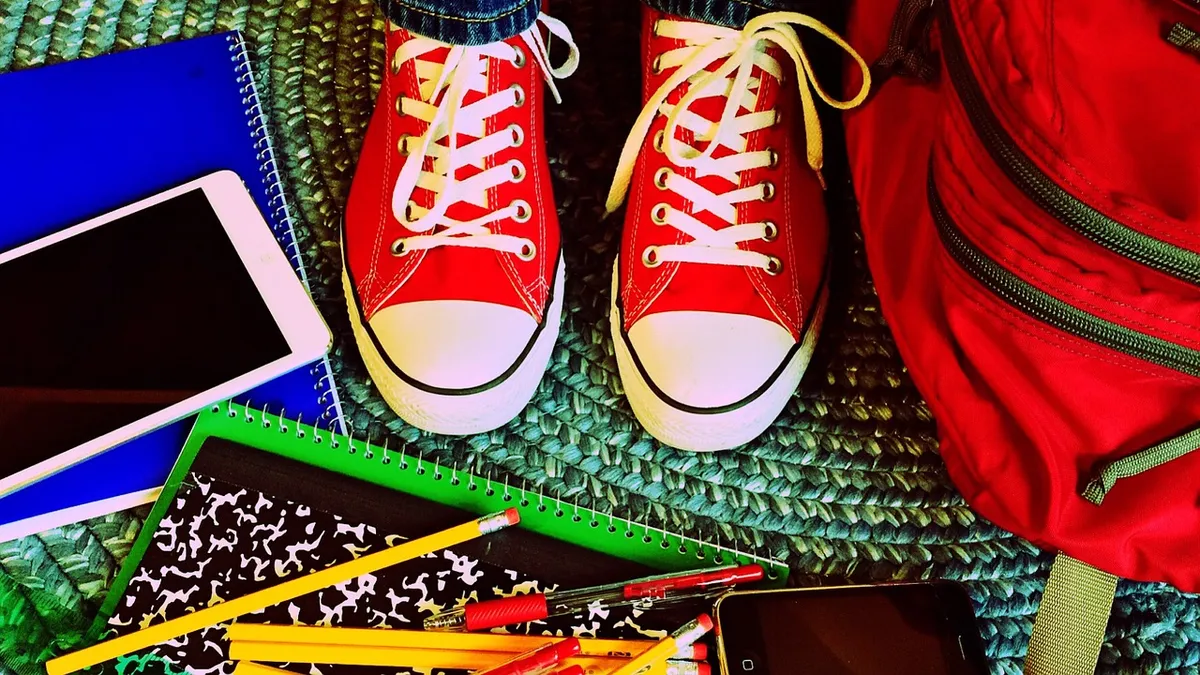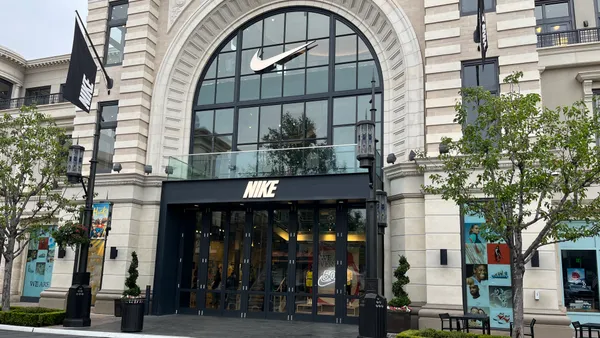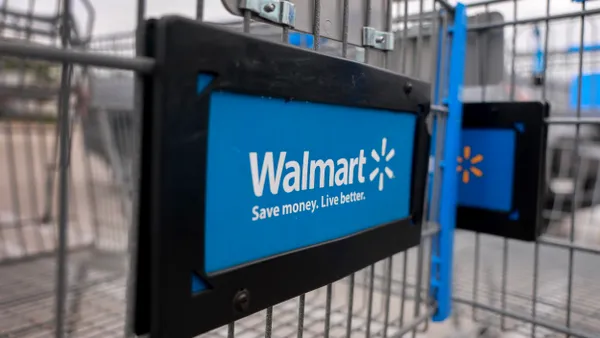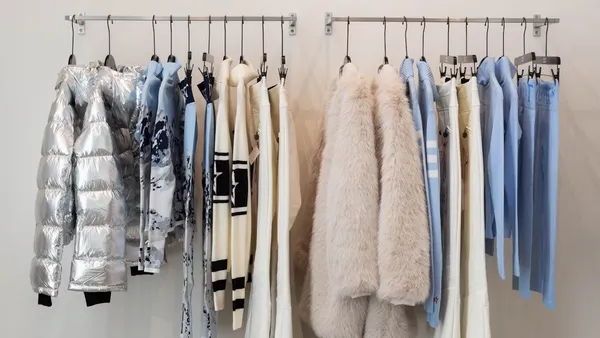Summer is winding down and the back-to-school selling season is well under way.
This is no small thing: Back-to-school is the second largest sales event annually and 2017 is shaping up to be a record year, in a year when the season matters more than ever.
Sales are expected to grow more than 10% over 2016 to $83.6 billion, according to the National Retail Federation's annual survey conducted by Prosper Insights & Analytics. This is projected to be the second-biggest haul for retailers after 2012's all-time high of $83.8 billion.
The 2012 spending spree is largely attributed to pent-up demand following the prolonged recession when parents held off on purchases — large and small — and tried to buy as little as possible. Once the floodgates broke, however, back-to-school shoppers went on a spree, snapping up new electronics, apparel and supplies.
Back-to-school sales are expected to grow more than 10% over 2016 to $83.6 billion — the second-biggest haul for retailers after 2012's all-time high of $83.8 billion.

So what's driving 2017's anticipated rush? Back-to-college spending, which is expected to reach an all-time high, Katherine Cullen, director of retail and consumer research at NRF, told Retail Dive in an interview.
College enrollment has been slowly climbing as students are more likely to leave home and live in a dorm or off-campus housing, according to Cullen. Even many traditional commuter colleges now require freshmen to live on campus, helping drive spending on home goods across several categories including grocery and particularly snacks and beverages. "The third largest spend for back-to-college shoppers was food — that's new this year," she said. Retailers stocking everything from Ramen noodles to futons are in a good position to capture this shopper.
Electronics are traditionally responsible for a large portion of the family budget this time of year. But 2017 marks a departure for who is using the gadgets. "This is striking — people are getting technology much earlier and it's a major spend," said Cullen. "Almost half of parents for middle schoolers said they were going to buy a laptop [this year]."
Laptops are popular for 35% of this age group while 40% said they planned to purchase a tablet. "The screen size is great for younger children and a lot of educational programs are loaded onto it," she pointed out.
In all, 63% of U.S. shoppers who plan to do some back-to-school shopping expect to buy technology or technology accessories, according to the Consumer Technology Association. "Tech is increasingly playing a role in education and not only do more consumers plan to buy tech for back-to-school, they also plan to spend more on tech purchases during one of the largest shopping seasons of the year," Steve Koenig, senior director of market research at CTA, said in a statement. "Among the planned tech purchases for back-to-school, six in 10 are accessories for devices, illustrating a near-ubiquitous attachment rate for accessories with back-to-school computing products."
Where they're spending, or planning to spend, has changed little since 2016. According to the CTA report, 88% of back-to-school shoppers plan to shop at a physical mass-merchant store and 56% plan to shop at a physical office-supply store. Both these statistics are the same as last year, according to the survey.
In 2017, roughly 44% back-to-school shoppers plan to spend at an online retailer according to both CTA and NRF.
While the shift to online hasn't accelerated since last year, the role of the internet has changed back-to-school shopping in one critical way.
A much longer season
Back-to-school shopping is more spread out then ever, according to the research. "People are confidently spending more and really spreading out their shopping throughout the season," said Cullen. And while back-to-school hasn't extended much beyond the post-Labor Day traditional end, it has begun earlier, thanks to the proliferation of digital tools.
The percentage of consumers conducting online research before making back-to-school purchases is increasing, according to CTA. Close to 81% of shoppers will partake in online research this year, up from 75% in 2016. Most (63%, which is up 13% from 2016) will compare prices online, 60% will conduct internet searches and 57% will visit a retailer's website. Online reviews will wield greater influence this year as 49% plan to read reviews or comments about both products and retailers — up 10% from 2016.
"People are confidently spending more and really spreading out their shopping throughout the season."

Katherine Cullen
Director of retail and consumer research at NRF
Old-school marketing tactics, however, still have a big influence on back-to-school as 41% of today's shoppers plan to review coupons sent through email, according to CTA.
So while research is beginning earlier in the summer, the buying does not. Some 27% of shoppers planned to start two months before returning to school, but 46.7% are waiting until three weeks to one month before going back to class, according to NRF's research.
The classics remain
Apparel, footwear and classic school supplies are the traditional stars of back-to-school. Not much has changed in that regard.
"What we see year-over-year are the [same] top selling items — the glue sticks, the notebooks, the crayons and backpacks," Walmart spokeswoman Erin Hulliberger told Retail Dive. "[And] we've always offered licensed items and this year is no different," and it's all about superheroes.
Apparel should get a much-needed boost this season. "We see apparel as a major area of spend for back-to-school," said NRF's Cullen. This is the largest part of the budget for younger kids and the second largest for college students.
"In prior days, spending was controlled more by parents and now even fairly young kids just buy it themselves."

Erik Gordon
Professor at the University of Michigan Ross School of Business.
Shoes are the third-most popular category, Cullen to Retail Dive. But the category has lost much of its glamour — just see this list of retail bankruptcies as evidence of how pressured specialists in the category are. Kids today are much more likely to shop for clothes year-round, rather than as part of a single shopping event, according to Erik Gordon, professor at the University of Michigan Ross School of Business.
"They get that stuff when they want to get that stuff," Gordon told Retail Dive. "In prior days, spending was controlled more by parents and now even fairly young kids just buy it themselves."
The part about who controls spending is perhaps one of the biggest trends for back-to-school. "Pre-teens and teens have a lot more buying power than they had in the past and are expected to put more of their own money towards back-to-school shopping than in the past," said Cullen. "That's some of the shift we're seeing for back-to-school."
This group is also influencing the season in at least one other very significant way.
Amazon is everywhere with everything
The story of the year will likely belong to Amazon, according to both Gordon and Barbara Kahn, professor of marketing at the University of Pennsylvania's Wharton School. For shoppers looking for convenience, Amazon will win out, and the online retailer is particularly popular with kids.
"They shop on Amazon all the time, these kids. They're like experts on Amazon," noted Gordon. "They text each other about what's on Amazon — high school students think of Amazon as this huge online place where you can buy everything."
"The brilliance of Amazon is it's about eliminating pain points," Kahn told Retail Dive in an interview. "Instead of maximizing excitement, [Amazon] is maximizing ease."
"The brilliance of Amazon is it's about eliminating pain points. Instead of maximizing excitement, [Amazon] is maximizing ease."

Barbara Kahn
Professor of marketing at University of Pennsylvania's Wharton School
Other retailers are adding services and features to make it easier for back-to-school shoppers. Mass merchants such as Target and Walmart have lists provided by local teachers available online. Most stores' omnichannel efforts include free in-store pickup, a feature increasingly popular with college students as parents can order, pay for and collect goods at the destination. Or better yet — let the kid collect it themselves.
"We know our customers are really busy especially at the start of the school year, so we offer a variety of different shopping services," Walmart spokeswoman Erin Hulliberger told Retail Dive. From in-store, same-day pickup to the ability to order groceries online, "we expect these to be popular with college students and families who can order everything and choose to pick up at a location closer to campus." Walmart even expanded the selection available through its online grocery pickup program to include back-to-school supplies for this year.
Bed Bath & Beyond has quite possibly the most comprehensive collection of back-to-college services of any retailer, from its Pack & Hold program that lets families shop at their local store or online and collect the entire purchase at the location closest to campus to a series of "move-in events" — essentially pop-up shops on campuses across the country with best-selling items for sale on site. Lists, room collections, popular picks and registries round out the programs, all designed to capture and win over the back-to-college shopper.
Do or die
Back-to-school could well be make-or-break for some retailers this year. "Certainly for apparel, they're in such peril that every season is [critical]," warns Gordon. "This will have a big influence on how many more stores are closed."
Sears, in particular, is getting closer to what Gordon believes could be its final season.
"My guess is you'll see three types of shoppers this year," mused Kahn. "First, the online shoppers who want convenience, and Amazon is going to meet most of their needs. Second, the off-price retailers [T.J. Maxx] and Walmart will appeal to those who really care about low-prices. And [third], you'll see people going out to try new brands and fashions."
"The ones who will really be hurt are the [retailers] stuck in the middle, like Macy's and J.C. Penney," she said.
Many online specialists are getting more aggressive when it comes to back-to-school campaigns. EBags typically focuses on the travel market but, come summer, its marketing and selection tips in favor of back-to-school. "The back-to-school weeks are some of our biggest weeks of the year," eBags CEO Mike Edwards told Retail Dive in an interview.
"While we compete with all the mass merchants, we generally home in and focus on experience," said Edwards. "We try to offer unique product not commonly found on a marketplace or at Target. We put a lot of time into really enhancing the site experience with [a] backpack finder and by offering up easy solutions."
"While we sell a lot online, it's still a store experience and, in many cases, it's a family activity," he added. "The backpack is part of the excitement of back-to-school."
"If the traditionally exciting times like back-to-school are not exciting, if retailing is not exciting at the most exciting time, then that's a problem. [And] retailing is just not exciting."

Erik Gordon
Professor at the University of Michigan Ross School of Business
But it's excitement that often seems lacking in retail today. Merchants are looking for new and unusual ways to add excitement back into stores — take Lululemon with its in-store yoga classes and the American Girl stores that offer mothers and daughters a storybook experience along with the doll and accessories. But when it comes to back-to-school, the retail experience is far too often more like a chemistry final than homecoming.
This speaks to a much larger problem for retail than lackluster back-to-school sales. "If the traditionally exciting times like back-to-school are not exciting, if retailing is not exciting at the most exciting time, then that's a problem," said Gordon. "[And] retailing is just not exciting."
"[We've] changed the shopping experience into one of convenience," agreed Kahn. "Instead of maximizing excitement, you're maximizing ease. But people still crave excitement and innovation."
There's a lot at stake for retailers, many of which are under pressure from changing consumer habits and heightened competition. The shift to online plays an especially large role when it comes to shaping back-to-school sales as this type of shopping has long been associated with family outings and a level of excitement for kids only duplicated by Christmas morning.
Winners will include home goods retailers such as Bed Bath & Beyond, Ikea and Target, predicted Gordon. Office supply stores and mass merchants should fare well, but mid-tier department stores and apparel specialists will continue to struggle.
NRF's Cullen is predictably more optimistic: People are spending more because retail is changing and seeing a lot of innovation. Time will tell.














